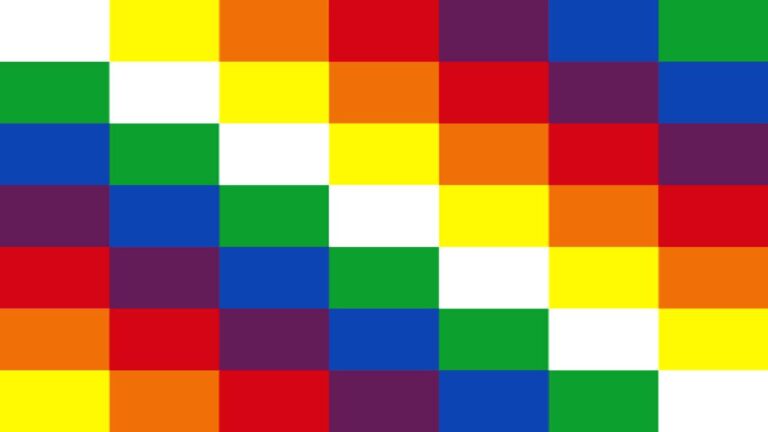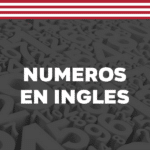In today's article we are going to delve into and learn a little more about Aymara language, also known as Aymara, which is spoken by various Bolivian populations, as well as other strong Latin American countries such as Argentina or Chile. On this occasion we are going to show you contemporary Aymara numbers, as some experts assure that their numbering has not always been this way.
Although you could start by learning each number from 1 to 100 individually, the best thing to do is learn how to build the numbers. In this way, it is much easier to learn all the numbers in Aymara correctly. As we would do with any other numbering system, the first thing is to learn the numbers from 0 to 9:
In the case of zero, there are different ways of calling it:
0 ch 'use
0 Muruq 'u
0 muyuga
Now the numbers from 1 to 9:
1 Mayan (Mä)
2 Paya (Pa)
3 kimsa
4 Pusi
5 phisqah
6 Subtract
7 Pack
8 kimsaqalqui
9 Llatunka
The reason why Maya y Paya have the variants ma y pa aside is because these are used when the number serves as a quantifier. That is, if we say "a dog", we would have to say "ma anu”. In the case of tens, hundreds and thousands, they are said as follows:
10 Tunka
100 Pataka
1000 Waranqa
1000000 million
Here is a video that we have prepared for you so that you can hear the correct pronunciation:
Aymara number notation is quite different, so understanding it is not as straightforward as other languages. Taking into account the western numerical notation, if we want to say 43, for example, we would have to decompose it into tens and units as follows:
43 = 4 tens + 3 ones = 4 · 10 + 3
In Aymara numbers the tens are tunka, the hundreds are pataka, the thousands waranqa and the millions milliona, so we come to the following conclusion:
43 = 4 tunka + 3
43 = pusi tunka + kimsa
43 = pusi tunka kimsani
Suffix ni is used when there are units, the rest remain the same. In case the number is a hundred or a ten, it would not be said mä pataka or mä tunka, but in this case only pataka and tunka should be said. Remember that this is only valid when we are talking about tens, hundreds or thousands.
To summarize the rule of ni, let's say it cannot be used inside a numeral construct. That is, in case there is a unit and it is used, it always has to be put to the end, you should never use it before.
Numbers in Aymara can count to hundreds of billions, although the truth is that such large numbers are useless for contemporary Aymara.
If you did not understand the construction rules very well, then you will see a table with all the numbers from 1 to 100:
How to write numbers in Aymara from 1 to 100
| Number | aymara |
| 1 | maya |
| 2 | paya |
| 3 | who are |
| 4 | I put |
| 5 | phisca |
| 6 | subject |
| 7 | paqalqu |
| 8 | kimsaqalqu |
| 9 | llatunka |
| 10 | tunka |
| 11 | tunka-mayani |
| 12 | tunka-payani |
| 13 | tunka-kimsani |
| 14 | tunka pusini |
| 15 | tunka-phiscani |
| 16 | tunka-suxtani |
| 17 | tunka-paqalquni |
| 18 | tunka-kimsaqalquni |
| 19 | tunka-llatunkani |
| 20 | patunka |
| 21 | pätunka-mayani |
| 22 | pätunka-payani |
| 23 | pätunka-kimsani |
| 24 | pätunka-pusini |
| 25 | pätunka-phiscani |
| 26 | pätunka-suxtani |
| 27 | pätunka-paqalquni |
| 28 | pätunka-kimsaqalquni |
| 29 | pätunka-llatunkani |
| 30 | kimsa-tunka |
| 31 | kimsa-tunka-mayani |
| 32 | kimsa-tunka-payani |
| 33 | kimsa-tunka-kimsani |
| 34 | kimsa-tunka-pusini |
| 35 | kimsa-tunka-phiscani |
| 36 | kimsa-tunka-suxtani |
| 37 | kimsa-tunka-paqalquni |
| 38 | kimsa-tunka-kimsaqalquni |
| 39 | kimsa-tunka-llatunkani |
| 40 | pusi-tunka |
| 41 | pusi-tunka-mayani |
| 42 | pusi-tunka-payani |
| 43 | pusi-tunka-kimsani |
| 44 | pusi-tunka-pusini |
| 45 | pusi-tunka-phiscani |
| 46 | pusi-tunka-suxtani |
| 47 | pusi-tunka-paqalquni |
| 48 | pusi-tunka-kimsaqalquni |
| 49 | pusi-tunka-llatunkani |
| 50 | phisca-tunka |
| 51 | phisca-tunka-mayani |
| 52 | phisca-tunka-payani |
| 53 | phisca-tunka-kimsani |
| 54 | phisca-tunka-pusini |
| 55 | phisca-tunka-phiscani |
| 56 | phisca-tunka-suxtani |
| 57 | phisca-tunka-paqalquni |
| 58 | phisca-tunka-kimsaqalquni |
| 59 | phisca-tunka-llatunkani |
| 60 | suxta-tunka |
| 61 | suxta-tunka-mayani |
| 62 | suxta-tunka-payani |
| 63 | suxta-tunka-kimsani |
| 64 | suxta-tunka-pusini |
| 65 | suxta-tunka-phiscani |
| 66 | suxta-tunka-suxtani |
| 67 | suxta-tunka-paqalquni |
| 68 | suxta-tunka-kimsaqalquni |
| 69 | suxta-tunka-llatunkani |
| 70 | paqalqu-tunka |
| 71 | paqalqu-tunka-mayani |
| 72 | paqalqu-tunka-payani |
| 73 | paqalqu-tunka-kimsani |
| 74 | paqalqu-tunka-pusini |
| 75 | paqalqu-tunka-phiscani |
| 76 | paqalqu-tunka-suxtani |
| 77 | paqalqu-tunka-paqalquni |
| 78 | paqalqu-tunka-kimsaqalquni |
| 79 | paqalqu-tunka-llatunkani |
| 80 | kimsaqalqu-tunka |
| 81 | kimsaqalqu-tunka-mayani |
| 82 | kimsaqalqu-tunka-payani |
| 83 | kimsaqalqu-tunka-kimsani |
| 84 | kimsaqalqu-tunka-pusini |
| 85 | kimsaqalqu-tunka-phiscani |
| 86 | kimsaqalqu-tunka-suxtani |
| 87 | kimsaqalqu-tunka-paqalquni |
| 88 | kimsaqalqu-tunka-kimsaqalquni |
| 89 | kimsaqalqu-tunka-llatunkani |
| 90 | llatunka-tunka |
| 91 | llatunka-tunka-mayani |
| 92 | llatunka-tunka-payani |
| 93 | llatunka-tunka-kimsani |
| 94 | llatunka-tunka-pusini |
| 95 | llatunka-tunka-phiscani |
| 96 | llatunka-tunka-suxtani |
| 97 | llatunka-tunka-paqalquni |
| 98 | llatunka-tunka-kimsaqalquni |
| 99 | llatunka-tunka-llatunkani |
| 100 | pataka |
And this has been it for today, we are waiting for you in the next chapter of this website, where we will learn something new, as we do every day. If you want, Can you suggest a topic to talk about here below in the comments? and we will take it into account for future publications.






Thank you
THANKS FOR THE HELP
Thanks I did the homework for this web page
Thank you it helped me a lot ☺????
I don't know if they could do the professions both in Aymara and in Spanish